Title search results
Showing 321 - 340 of 1501078 items
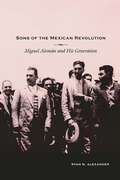
Sons of the Mexican Revolution: Miguel Alemán and His Generation (Diálogos Series)
By Ryan M. Alexander. 2016
The 1946 Mexican presidential election signaled the ascent of a new generation of cosmopolitan civilian government officials, led by the…
magnetic lawyer Miguel Alemán. Supporters hailed them as modernizing visionaries whose policies laid the foundation for unprecedented economic growth, while critics decried the administration&’s toleration of rampant corruption, hostility to organized labor, and indifference to the rural poor. Setting aside these extremes of opinion in favor of a more balanced analysis, Sons of the Mexican Revolution traces the socialization of this ruling generation&’s members, from their earliest education through their rise to national prominence. Using a wide array of new archival sources, the author demonstrates that the transformative political decisions made by these men represented both their collective values as a generation and their effort to adapt those values to the realities of the Cold War.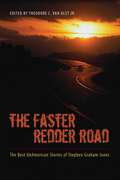
The Faster Redder Road: The Best UnAmerican Stories of Stephen Graham Jones
By Stephen Graham Jones. 2015
This collection showcases the best writings of Stephen Graham Jones, whose career is developing rapidly from the noir underground to…
the mainstream. The Faster Redder Road features excerpts from Jones&’s novels—including The Last Final Girl, The Fast Red Road: A Plainsong, Not for Nothing, and The Gospel of Z—and short stories, some never before published in book form. Examining Jones&’s contributions to American literature as well as noir, Theodore C. Van Alst Jr.&’s introduction puts Jones on the literary map.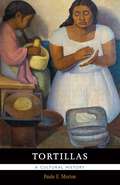
Tortillas: A Cultural History
By Paula E. Morton. 2014
&“The ordinary tortilla was an extraordinary bond between the human and divine. . . . From birthdays to religious ceremonies,…
the people of Mesoamerica commemorated important events with tortillas. One Maya tribe even buried their dead with tortillas so that the dogs eaten as dinner during life would not bite the deceased in revenge.&”—from Tortillas: A Cultural HistoryFor centuries tortillas have remained a staple of the Mexican diet, but the rich significance of this unleavened flatbread stretches far beyond food. Today the tortilla crosses cultures and borders as part of an international network of people, customs, and culinary traditions.In this entertaining and informative account Paula E. Morton surveys the history of the tortilla from its roots in ancient Mesoamerica to the cross-cultural global tortilla. Morton tells the story of tortillas and the people who make and eat them—from the Mexican woman rolling the mano over the metate to grind corn, to the enormous wheat tortillas made in northern Mexico, to twenty-first-century elaborations like the stuffed burrito. This study—the first to extensively present the tortilla&’s history, symbolism, and impact—shows how the tortilla has changed our understanding of home cooking, industrialized food, healthy cuisine, and the people who live across borders.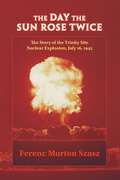
The Day the Sun Rose Twice: The Story of the Trinity Site Nuclear Explosion, July 16, 1945
By Ferenc Morton Szasz. 1984
Winner of the Western History Association&’s Robert G. Athearn Award for outstanding book on the twentieth-century American WestJust before dawn…
on July 16, 1945, the world&’s first nuclear bomb was detonated at Trinity Site in an isolated stretch of the central New Mexico desert. It may have been the single most important event of the twentieth century. The Day the Sun Rose Twice tells the fascinating story of the events leading up to this first test explosion, the characters and roles of the people involved, and the aftermath of the bomb&’s successful demonstration.With J. Robert Oppenheimer, the &“father of the atomic bomb,&” at last getting his Hollywood close-up in Christopher Nolan&’s new blockbuster film Oppenheimer, readers can discover the background behind the world&’s first atomic blast in Ferenc Morton Szasz&’s award-winning history. &“Tightly focused, lucidly written, and thoroughly researched,&” according to the New York Times Book Review, the book provides &“a valuable introduction to how our nuclear dilemma began.&”
How to Lose a Lord in Ten Days: A Novel
By Sophie Irwin. 2025
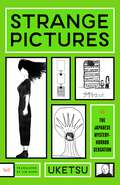
Strange Pictures: A Novel
By Uketsu. 2022
“Delightfully macabre and fiendishly clever. Seemingly unconnected stories tie themselves into a complicated knot, which Uketsu masterfully unravels.”—G. T. Karber,…
author of the national bestseller Murdle“Uketsu is a disrupter, the master of quiet horror.”—Janice Hallett, internationally bestselling author of The Appeal“Wonderfully complex and carefully crafted . . . Uketsu keeps readers guessing until the very end.” —New York Times Book ReviewThe spine-tingling "triumphant international debut" (Publishers Weekly starred review) that has taken Japan by storm—an eerie fresh take on mystery-horror in which a series of seemingly innocent pictures draws you into a disturbing web of unsolved mysteries and shattered psyches.An exploration of the macabre, where the seemingly mundane takes on a terrifying significance. . . .A pregnant woman's sketches on a seemingly innocuous blog conceal a chilling warning.A child's picture of his home contains a dark secret message.A sketch made by a murder victim in his final moments leads an amateur sleuth down a rabbithole that will reveal a horrifying reality.Structured around these nine childlike drawings, each holding a disturbing clue, Uketsu invites readers to piece together the mystery behind each and the over-arching backstory that connects them all. Strange Pictures is the internationally bestselling debut from mystery horror YouTube sensation Uketsu—an enigmatic masked figure who has become one of Japan's most talked about contemporary authors.Translated from the Japanese by Jim Rion.Supplemental enhancement PDF accompanies the audiobook.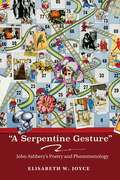
In &“A Serpentine Gesture&”: John Ashbery&’s Poetry and Phenomenology Elisabeth W. Joyce examines John Ashbery&’s poetry through the lens of…
Maurice Merleau-Ponty&’s conception of phenomenology. For Merleau-Ponty, perception is a process through which people reach outside of themselves for sensory information, map that experiential information against what they have previously encountered and what is culturally inculcated in them, and articulate shifts in their internal repositories through encounters with new material. Joyce argues that this process reflects Ashbery&’s classic statement of poetry being the &“experience of experience.&” Through incisive close readings of Ashbery&’s poems, Joyce examines how he explores this process of continual reverberation between what is sensed and what is considered about that sensation and, ultimately, how he renders these perceptions into the &“serpentine gesture&” of language.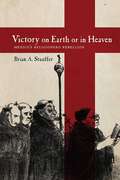
Victory on Earth or in Heaven: Mexico's Religionero Rebellion
By Brian A. Stauffer. 2019
This work reconstructs the history of Mexico&’s forgotten &“Religionero&” rebellion of 1873–1877, an armed Catholic challenge to the government of…
Sebastián Lerdo de Tejada. An essentially grassroots movement—organized by indigenous, Afro-Mexican, and mestizo parishioners in Mexico&’s central-western Catholic heartland—the Religionero rebellion erupted in response to a series of anticlerical measures raised to constitutional status by the Lerdo government. These &“Laws of Reform&” decreed the full independence of Church and state, secularized marriage and burial practices, prohibited acts of public worship, and severely curtailed the Church&’s ability to own and administer property. A comprehensive reconstruction of the revolt and a critical reappraisal of its significance, this book places ordinary Catholics at the center of the story of Mexico&’s fragmented nineteenth-century secularization and Catholic revival.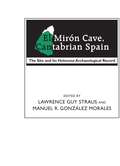
El Mirón Cave, Cantabrian Spain: The Site and Its Holocene Archaeological Record
By Lawrence Guy Straus, Manuel R. González Morales. 2023
Though known as a site since 1903, El Mirón Cave in the Cantabrian Mountains of northern Spain remained unexcavated until…
a team from the universities of New Mexico and Cantabria began ongoing excavations in 1996. This large, deeply stratified cave allowed the team to apply cutting-edge techniques of excavation, recording, and multidisciplinary analysis in the meticulous study of a site that has become a new reference sequence for the classic Cantabrian region. The excavations uncovered the long history of human occupation of the cave, extending from the end of the Middle Paleolithic, through the Upper Paleolithic, up to the modern era. This volume comprehensively describes the background information on the setting, the site, the chronology, and the sedimentology. It then focuses on the biological and archaeological records of the Holocene levels pertaining to Mesolithic, Neolithic, Chalcolithic, and Bronze Age. Archaeologists, anthropologists, and historians will be drawn to this study and its extensive findings, dated by some seventy-five radiocarbon assays.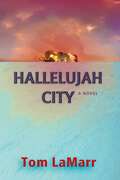
Hallelujah City
By Tom LaMarr. 2007
The last thing Scott Chambers expected to find on his doorstep in Aurora, Colorado, was his twenty-one-year-old daughter Mary. Recently…
exiled from a religious cult in Minnesota, Mary is carrying the child of the cult's leader and self-proclaimed messiah, Daniel Hawker. With the Dawn of the New Millennium scheduled for midnight, Mary claims she has been sent to convert her skeptical father. Yet, when the next day's headline in the Denver Post reads Just Another Judgment Day, relegating the Doomsday story to page four, Mary blames her weaknesses for the world that did not end. She announces she will return to Minnesota to accept full responsibility for Daniel Hawker's failed prophecy and prove that her beloved Teacher is not a fraud. Chambers, suspicious of his daughter's condition and none too pleased with the so-called messiah, insists on accompanying her. Meanwhile, author Adrian C. Hummel has been battling creditors, his agent, and his editor for two years. Living in motel-squalor on the outskirts of Trapper's Point, Minnesota, he seeks an inside track to Daniel Hawker. He is certain an exclusive interview is all he needs to launch him into notoriety, granting him the fortune that has eluded him. Mary Chambers might be his last chance to gain access to the mastermind of Hallelujah City, the cult's headquarters.These stories converge in a complex and tender tale of family dysfunction and redemption that explores what happens the day after the world was predicted to end.
Nowhere: Poems (Mary Burritt Christiansen Poetry Series)
By Katie Schmid. 2021
A book of wild imagination and linguistic play, Nowhere begins by chronicling the pain that the speaker and her absent…
father endure during the years they are separated while he is in prison. The alternative universe the speaker builds in order to survive this complex loss and its aftermath sees her experimenting with her body to try to build connection, giving it away to careless and indifferent lovers as she dreams of consuming them in the search for a coherent self. But can the speaker voice her trauma and disjunction? Can anyone, or is suffering something that cannot be said, but only hinted at? Ultimately the book argues that the barest hour of suffering can be the source of immense creative power and energy, which is the speaker&’s highest form of consolation.This brilliant debut collection offers cohesive trauma narratives and essential counter-narratives to addiction stories, and it consistently complicates the stories told by the world about so-called fatherless girls and the bodies of women.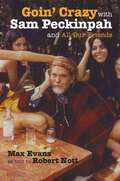
Goin' Crazy with Sam Peckinpah and All Our Friends
By Max Evans, Robert Nott. 2014
Almost as famous for the legendary excesses of his personal life as for his films, Sam Peckinpah (1925–1984) cemented his…
reputation as one of the great American directors with movies such as The Wild Bunch and Pat Garrett and Billy the Kid. Max Evans, one of Peckinpah&’s best friends, experienced the director&’s mercurial character and personal demons firsthand. In this enthralling memoir we follow Evans and Peckinpah through conversations in bars, family gatherings, binges on drugs and alcohol, struggles with film producers and executives, and Peckinpah&’s abusive behavior—sometimes directed at Evans himself.Evans&’s stories—most previously unpublished—provide a uniquely intimate look at Peckinpah, their famous friends (including Lee Marvin, Brian Keith, Joel McCrea, and James Coburn), and the business of Hollywood in the 1960s and 1970s.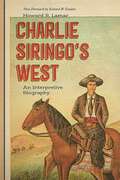
Charlie Siringo's West: An Interpretive Biography
By Howard R. Lamar. 2005
Charlie Siringo (1855–1928) lived the quintessential life of adventure on the American frontier as a cowboy, Pinkerton detective, writer, and…
later as a consultant for early western films. Siringo was one of the most attractive, bold, and original characters to live and flourish in the final decades of the Wild West. His love of the cattle business and of cowboy life was so great that in 1885 he published A Texas Cowboy, or Fifteen Years on the Hurricane Deck of a Spanish Pony—Taken From Real Life, which Will Rogers dubbed the &“Cowboy&’s Bible.&”Howard R. Lamar&’s biography deftly shares Siringo&’s story within seventy-five pivotal years of western history. Siringo was not a mere observer but a participant in major historical events including the Coeur d&’Alene mining strikes of the 1890s and Big Bill Haywood&’s trial in 1907. Lamar focuses on Siringo&’s youthful struggles to employ his abundant athleticism and ambitions and how Siringo&’s varied experiences helped develop the compelling national myth of the cowboy.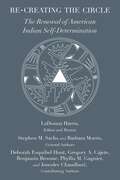
Re-creating the Circle: The Renewal of American Indian Self-Determination
By Stephen M. Sachs, Morris Barbara. 2011
A collaboration between Native activists, professionals, and scholars, Re-Creating the Circle brings a new perspective to the American Indian struggle…
for self-determination: the returning of Indigenous peoples to sovereignty, self-sufficiency, and harmony so that they may again live well in their own communities, while partnering with their neighbors, the nation, and the world for mutual advancement. Given the complexity in realizing American Indian renewal, this project weaves the perspectives of individual contributors into a holistic analysis providing a broader understanding of political, economic, educational, social, cultural, and psychological initiatives. The authors seek to assist not only in establishing American Indian nations as full partners in American federalism and society, but also in improving the conditions of Indigenous people world wide, while illuminating the relevance of American Indian tradition for the contemporary world facing an abundance of increasing difficulties.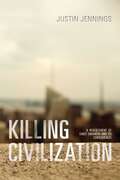
Killing Civilization: A Reassessment of Early Urbanism and Its Consequences
By Justin Jennings. 2016
The concept of civilization has long been the basis for theories about how societies evolve. This provocative book challenges that…
concept. The author argues that a &“civilization bias&” shapes academic explanations of urbanization, colonization, state formation, and cultural horizons. Earlier theorists have criticized the concept, but according to Jennings the critics remain beholden to it as a way of making sense of a dizzying landscape of cultural variation. Relying on the idea of civilization, he suggests, holds back understanding of the development of complex societies.Killing Civilization uses case studies from across the modern and ancient world to develop a new model of incipient urbanism and its consequences, using excavation and survey data from Çatalhöyük, Cahokia, Harappa, Jenne-jeno, Tiahuanaco, and Monte Albán to create a more accurate picture of the turbulent social, political, and economic conditions in and around the earliest cities. The book will influence not just anthropology but all of the social sciences.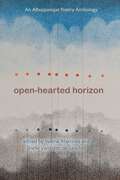
Open-Hearted Horizon: An Albuquerque Poetry Anthology (Albuquerque Poet Laureate Series)
By Valerie Martínez and Shelle VanEtten de Sánchez. 2024
Open-Hearted Horizon: An Albuquerque Poetry Anthology invites you into a poetic conversation. The anthology includes a wide range of Albuquerque-based…
poets and poems that are inspired—directly, associatively, obliquely—by Albuquerque, New Mexico, as a place and as a community. Anthologies commonly celebrate a multitude of voices. Because this one is place-based, it aims to draw you into a circle that deepens your sense of place and people, of contexts and cultures, whether you know Albuquerque or not. Because the Albuquerque poetry community is characterized by its support for individual writers and by a strong impulse toward creative collaboration, Open-Hearted Horizon features poems in multiple voices. In addition to poems by individual poets, this collection also features collaborative works, including those by the EKCO collective and one that features a line from every poem in the anthology. Overall, the collection invites you to experience Albuquerque in all its richness, diversity, and depth.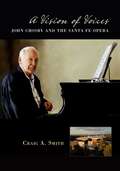
A Vision of Voices: John Crosby and the Santa Fe Opera
By Craig A. Smith. 2015
A destination for thousands of opera lovers every year and the anchor of Santa Fe&’s thriving arts scene, the Santa…
Fe Opera owes its existence to the vision and hard work of one man: John O&’Hea Crosby (1926–2002), who created the company when he was only thirty years old and guided its fortunes for the next forty-five years. This book, the first in-depth exploration of Crosby&’s career, shows how the Opera reflected his passions for music and the arts.A Vision of Voices depicts the many sides of Crosby—a dreamer and tough-minded businessman, an artistic explorer and conservative programmer, and a competent conductor and sharp critic. His devotion to quality and his obsessive oversight bore an enduring harvest that forever changed Santa Fe, the state of New Mexico, and the operatic world.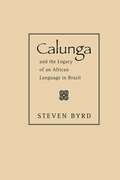
Calunga and the Legacy of an African Language in Brazil
By Steven Byrd. 2012
Although millions of slaves were forcibly transported from Africa to Brazil, the languages the slaves brought with them remain little…
known. Most studies have focused on African contributions to Brazilian Portuguese rather than on the African languages themselves. This book is unusual in focusing on an African-descended language. The author describes and analyzes the Afro- Brazilian speech community of Calunga, in Minas Gerais. Linguistically descended from West African Bantu, Calunga is an endangered Afro-Brazilian language spoken by a few hundred older Afro-Brazilian men, who use it only for specific, secret communications. Unlike most creole languages, which are based largely on the vocabulary of the colonial language, Calunga has a large proportion of African vocabulary items embedded in an essentially Portuguese grammar. A hyrid language, its formation can be seen as a form of cultural resistance.Steven Byrd&’s study provides a comprehensive linguistic description of Calunga based on two years of interviews with speakers of the language. He examines its history and historical context as well as its linguistic context, its sociolinguistic profile, and its lexical and grammatical outlines.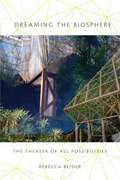
Dreaming the Biosphere: The Theater of All Possibilities
By Rebecca Reider. 2009
"Biosphere 2" rises from southern Arizonas high desert like a bizarre hybrid spaceship and greenhouse. Packed with more than 3,800…
carefully selected plant, animal, and insect species, this mega-terrarium is one of the world's most biodiverse, lush, and artificial wildernesses. Only recently transformed from an abandoned ghost dome to a University of Arizona research center, the site was the setting of a grand drama about humans and ecology at the end of the twentieth century. The seeds of Biosphere 2 sprouted in the 1970s at Synergia, a desert ranch in New Mexico where John Allen and a handful of dreamers united to create a self-reliant utopia centered on ecological work, study, and their traveling experimental theater troupe, "The Theater of All Possibilities." At a time of growing tensions in the American environmental consciousness, the Synergians took on varied projects around the world that sought to mend the rift between humans and nature. In 1984, they bought a piece of desert to build Biosphere 2. Eco-enthusiasts competed to become the eight "biospherians" who would lock themselves inside the giant greenhouse world for two years to live in harmony with their wilderness, grow their own food, and recycle all their air, water, and wastes.Thin and short on oxygen, the biospherians stoically completed their survival mission, but the communal spirit surrounding Biosphere 2 eventually dissolved into conflict--ultimately the facility would be seized by armed U.S. Marshals. Yet for all the story's strangeness, perhaps strangest of all was how normal Biosphere 2 actually was. The story of this grand eco-utopian adventure (and misadventure) becomes a parable about the relationship between humans and nature in postmodern America.Visit the authors' website at www.dreamingthebiosphere.com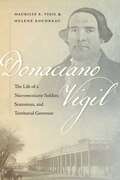
Donaciano Vigil: The Life of a Nuevomexicano Soldier, Statesman, and Territorial Governor
By Helene Boudreau, Maurilio E. Vigil. 2022
Born in Santa Fe in 1802, Donaciano Vigil was an active participant in many of the critical events in New…
Mexico&’s history in the nineteenth century. Vigil was witness to New Mexico&’s transition from a Spanish province (1802–1821) to a Mexican department (1821–1846) and eventually to an American territory (1846–1877), and he was a key player in most of the events of that era. As a Hispano soldier and officer in the New Mexico Militia, he was instrumental in the Navajo Wars, the Rio Arriba insurrection of 1837, the Texas invasion of 1841, and the American invasion of 1846. As a Mexican statesman in New Mexico, he was one of the most active assemblymen. Following the American occupation, he joined the civil government, first as secretary, then as governor. It was in these roles that Donaciano left an enduring impact and legacy on the territory.In this gripping biography of a remarkable man, Maurilio E. Vigil and Helene Boudreau fill the gap within the scholarship on Hispanics in nineteenth-century New Mexico.